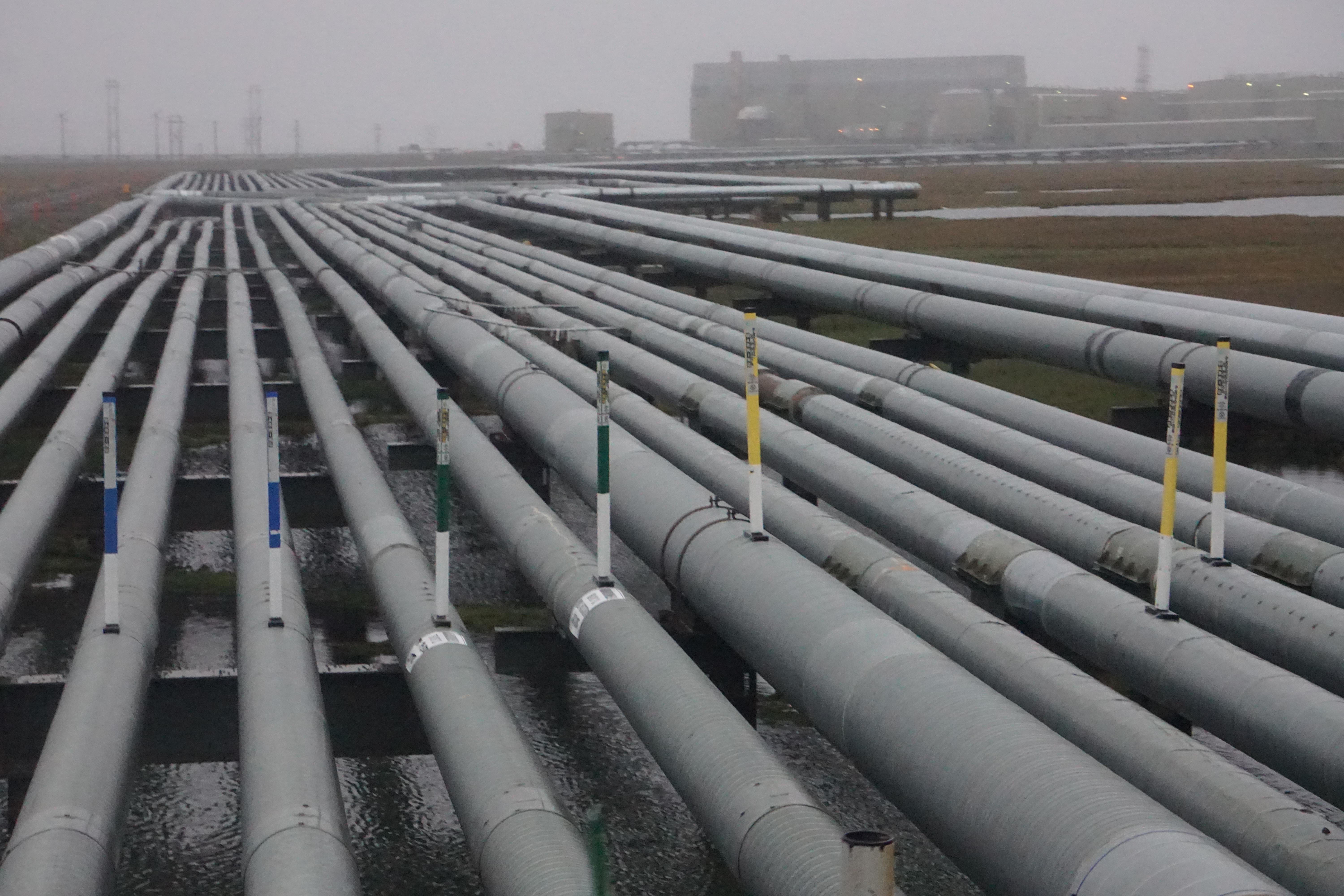Methane emissions from North Slope oil fields are larger than previously believed — but minor compared to flux from warming soils
North Slope oil fields also emit a lot less than similar operations in the Lower 48.

A study of fugitive methane produced by oil operations on Alaska’s North Slope provides a combination of bad news and good news.
The bad: The amount is two to five times the previously published estimates.
The newly published study, in the journal Atmospheric Environment, uses high-precision atmospheric measurements to quantify the flux of methane from the Prudhoe Bay-area oil fields. Those measurements, from a series of flights taken over two days in 2016, put the estimated methane flux at 1,500 kilograms per hour. That is a level far higher than what is reported on the Environmental Protection Agency’s Greenhouse Gas Reporting Program, a self-reporting system in which major emitters are required to make annual reports that are available to the public.
The good news: The North Slope oil fields sent much less fugitive methane into the atmosphere than big oil-producing regions in the Lower 48.
There are important reasons for the difference, said Cody Floerchinger of Harvard University, the lead author of the study.
While the North Slope fields are, for now, sending only oil to market, the Lower 48 regions are producing and shipping both oil and gas, said Floerchinger, a post-doctoral researcher with Harvard’s Solar Geoengineering Research Program.
In the places like the Bakken oil-field basin in North Dakota and the Marcellus shale region in Pennsylvania, natural gas is a major product, spending a lot of time above ground in processing plants, pipelines and elsewhere. “The gas gets handled by many different facilities,” he said. “There are a lot more opportunities for it to leak.”
There are also a lot more wells in those Lower 48 basins than on the North Slope, which also means more potential sources of methane leaks, he said.
The Permian Basin, for example, has about 18,400 operating wells, he said. That is more than three times the cumulative number of active wells in Alaska as of 2018, according to the Alaska Oil and Gas Conservation Commission.
An important finding of the study is the confirmation that oil operations contribute only a tiny portion of the methane coming up from ground across the North Slope.
Oil-field methane emissions have an important characteristic that distinguishes them from the larger emissions of methane from the warming tundra and permafrost soils. Oil-field methane is accompanied by ethane, something that is not produced by the bacterial processes in soil.
In the summer, the plant-growing season on the North Slope, the oil fields contribute less than 3 percent of the whole region’s methane flux, the study found. That percentage is probably higher in winter because methane emissions from the soils are lower outside of the growing season, but even then the oil fields are very small contributors to North Slope-wide flux, the study said.
That information may be reassuring to scientists who are monitoring the effects of permafrost thaw and warming, which allows old frozen carbon to be metabolized into greenhouse gases emitted to the atmosphere, Florerchinger said. They can be assured that the oil-field activities are not skewing their readings on tundra carbon-gas emissions, he said.
“It’s nice to know that Prudhoe Bay isn’t an interference in the data sets,” he said.
While oil-field emissions are only a negligible factor, the methane streaming from the North Slope’s ground to the air is ominous.
Methane is an especially potent greenhouse gas — many times more powerful than carbon dioxide at trapping heat, according to the EPA — so its emissions raise concerns. Methane produced from thawing permafrost and warming tundra soils is expected to feed into the cycle that has already accelerated Arctic warming.
The methane-measuring project was supported by the National Oceanic and Atmospheric Administration. A NOAA plane conducted the flights over Prudhoe Bay, and samples were analyzed at NOAA’s Earth System Research Laboratory in Boulder, Colorado.
The project was also part of NASA’s Arctic-Boreal Vulnerability Experiment, or ABoVE, a decade-long research program that is gathering information from Alaska and western Canada.
Oil-field methane is different from the oil-field particulate pollution that has become a concern for North Slope communities and a subject of ongoing study. The brownish haze that sometimes lingers over the North Slope is produced by combustion in both the nearby oil fields and in faraway sites in Asia and Europe, studies have shown. That North Slope oil-field pollution is significant enough to affect cloud formation in the region.